Sony NEX-7 with the SLR Magic Hyperprime 50 T0.95 and other ramblings…
I recently updated my rolling review of the SLR Magic “Hyperprime” 50mm T0.95 lens, which is their statement Leica mount lens. I Just added a few images shot with it on the Sony NEX-7 and have to say it did great. You can see my full review of this lens, which again is a Leica mount lens, HERE. FYI, SLR Magic sold out of their initial order run after just a couple of hours of being made available for order a few weeks ago. Not sure when they will be accepting more orders but do know that many are really excited to get their hands on one soon. The images embedded in this article were all shot with the NEX-7 and the SLR Magic lens.
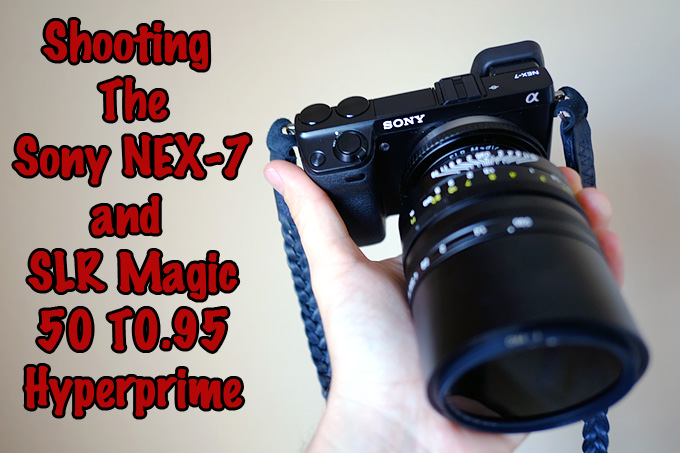
Bonding with your camera
It has been a while since my NEX-7 review. In fact, it seems like it has been a really long time and in fact it was about half a year ago already that I wrote about this new Sony flagship from their NEX series of cameras. Now that I have my own NEX-7 and have been using it more and more for my personal photography and family snaps I can say that I am really enjoying this camera more and more. That is saying a lot because remember, it is hard for a guy like me to stick with one particular camera due to the fact that it is my job to try out all of the new stuff!
The only camera that has always stood the test of time with me has been my Leica quite simply because I never found anything else I enjoyed shooting with more. But that doesn’t mean I do not enjoy shooting with other cameras, because I most certainly do. But I feel it has taken months to really get to know my NEX-7 like I know my M9. Not because it is so difficult to get to know, but because I really just started getting serious with it a few weeks ago. These days I have been shooting it more than my Leica M9 and I admit, for me, I have been preferring it to the Fuji X-Pro 1 as well mainly due to the fact that when I shoot with the NEX, I do not have the quirks I find with the Fuji but damn, I so love the Fuji IQ and look. The NEX-7 is not perfect but I have to say it makes a wonderful companion to the M9 and it is especially good with Leica lenses.
These days it seems to be about the latest and greatest for many shooters and gear heads. For others, they are happy to stick with the older ‘classics” and this is good as they can often times get BETTER results because they KNOW their cameras well. I am preparing an article on this subject because I find it so important to really get to know your camera. If you bond and know your camera as well as you know yourself, then your images can go to a whole new level of great. I feel this “bond” with my Leica M and this is the camera I pull out when it is time for me to get serious, simply because I KNOW THE M well. The same can be said for anyone, doesn’t have to be a Leica though. That is just my camera of choice. My #1 pick. Anyone can easily bond with whatever camera they really enjoy.
With so many mirrorless cameras coming out at a blistering pace I have narrowed down my faves to what you see on the “My Gear” page but there are always new cameras on the horizon so if a camera sticks around the Huff household for longer than 3 months that is pretty impressive 🙂
Choose your digital film stock
The fact remains, even in todays digital world, that a camera and lens is simply a box that gathers light. Instead of that light hitting a frame of film, it now hits a digital sensors. Most digital sensors today are good but all are different and when shooting different cameras it is almost like shooting different film stock. For example, Fuji cameras will deliver a different look due to their color signature and tonality. Sony is the same way as is Leica, Canon, Olympus, and others. So choosing a camera today can almost be like choosing a film stock in the past. Sort of. This is true when you shoot JPEG as the camera will process the colors, the contrast, the sharpness and any effects you choose. Shoot RAW and you will be controlling this using the software you prefer. Even with that said, there are differences in sensors and cameras even when using RAW files.
The way the camera renders a scene…
The Sony NEX-7 is sort of neutral in my opinion. Fuji gives us nice dynamic range and very bold colors. Canon gives us softer more pastel like colors. Nikon goes for rich lifelike colors and detail and Olympus has a signature many love with it’s great rendering of blues and reds. Leica gives us the much sought after “Leica Look” (which yes, does indeed exist) and colors but most of that is down to the lens and full frame sensor of the M9. After years of shooting these brands I can usually see an image and get a feel of what camera shot what image. Not all of the time, but most of the time.
But in this article I am talking about the NEX-7, which is a great “all around use” kind of camera – great reds that at times can get a little too bold if you are not careful, but nice natural yellows and greens and great depth when using a good lens. It is true what you hear, that lenses are the heart of any camera system. Once you pick your “film stock”, which is your brand and type of camera with the sensor you desire, you need a great lens to go with it. Attaching cheap kit zooms will give you decent results but attaching great glass will give you much better results. This is why Leica has the reputation it has these days. It’s not the camera bodies as much as the amazing glass they produce. I can safely say that todays Leica lenses are the best lenses made in the world. Period. If someone says otherwise they are either bitter at Leica prices, jealous, or has never seriously tried a Leica M lens. My Leica photos have always stood out more than others it seems and I would not be saying so if I did not believe this.
Now I am not here saying that the Leica M9 is the best camera ever made as it has been filled with flaws, cracked sensor glass, SD card issues, focus issues and the higher ISO of the M9 is not that great by todays standards. I love the usability of the M9 but at times it has been frustrating so taking breaks from it and shooting these smaller mirror less cameras has been great fun for me, and at times, eye-opening. I LOVE and ADORE my M but these days there are many great alternatives that get you in the same ballpark for much less cash outlay. None will feel like a Leica or give you the RF experience though.
Back to the NEX
I was out and about shooting the NEX-7 with an all new Leica to NEX adapter made by SLR Magic and was very happy with the results, even in the full ugly and harsh AZ sun (which is horrendous for photographers). Keep an eye here for news on this adapter because it is very unique. It is an adapter that you can twist and make the minimum focus distance limitations of the M lenses disappear! Yep, you can focus super close now with your M lenses on the NEX system, so this is really cool. The adapter is not ready for sale just yet but seems to work very well though I did have a teeny bit of play when mounting my 35 Lux ASPH II and Hyperprime. The only adapter I have found that has no play at all is the $250 Novoflex adapter which is super pricey but rock solid.
I have been told this new adapter from SLR Magic is almost ready to be released so when it is I will post about it and show you how it works, and how to get one. The fact that you will have the ability to focus super close is pretty cool. As for the Hyperprime, I continued to be impressed with it and I believe it is one of the coolest lenses you can get for your Leica M. It looks damn good on the Sony as well.
On the NEX-7 and super close focusing using the all new adapter from SLR Magic.
So I guess what I am saying here is that I am still digging the NEX-7. I am NOT happy about the video capabilities anymore though as my camera has been overheating after a few minutes of constant video shooting, at which time the camera just shuts down. Other than that I have had no operation issues whatsoever. Great design, great body, great versatility and the ability to shoot Leica glass with focus peaking is fantastic. I have been enjoying the EVF quite a bit as well as the tiltable LCD. While its image quality and rendering is quite a bit different from the Fuji X-Pro 1 it is a great solid camera that one could easily bond with. 🙂
You can buy the NEX-7 kit here at Amazon.

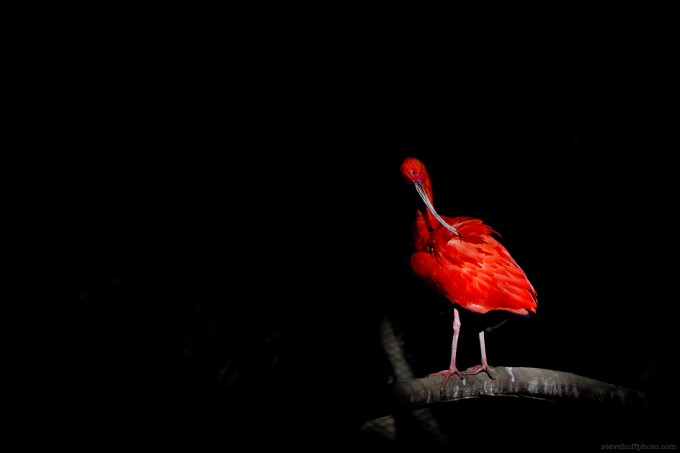
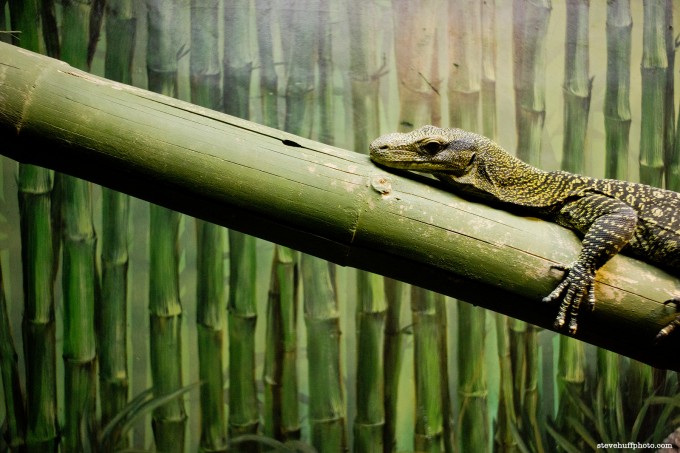
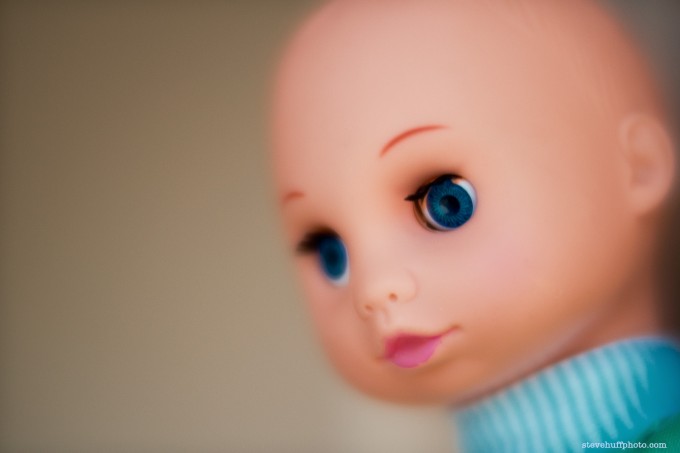
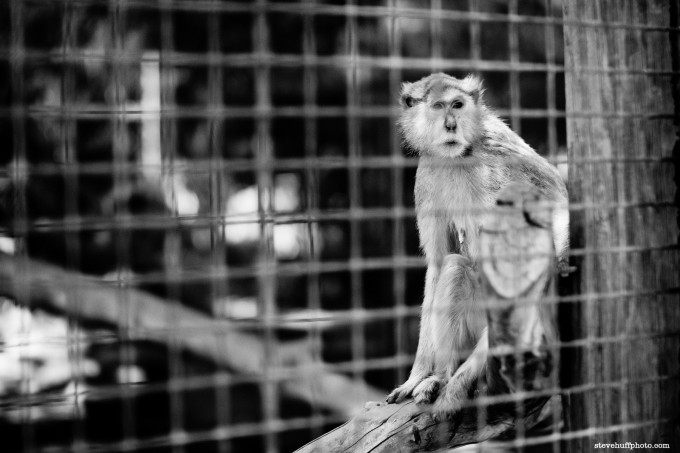
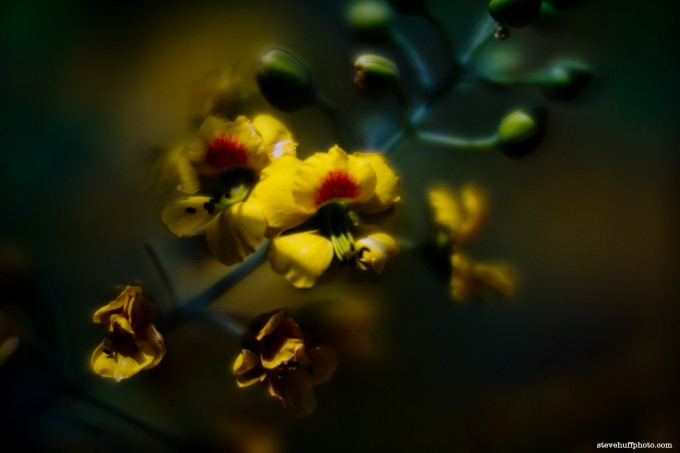
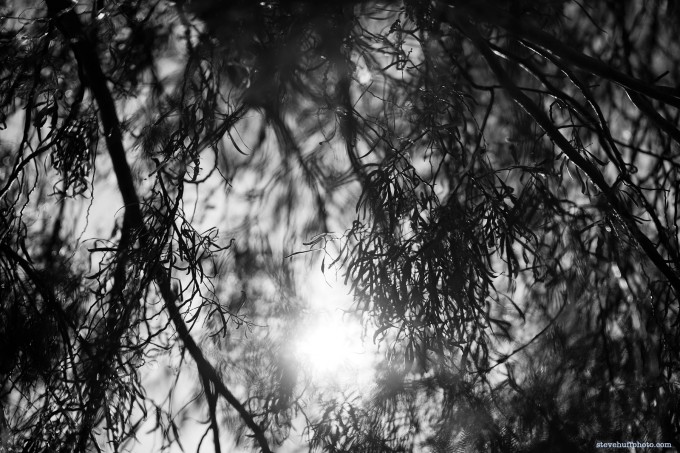


I have been shooting SLR Magic 50/0.92 CINE on my NEX-7 now since august. I all ready have a Zeiss 24/1.8 and a Zeiss 85/1.4 (with A-adapter), and I love them. But since I got the “tank” from SLR magic, I have been shooting with it 90% of the time. Maybe more.
I think it has a few design- and building-flaws. But I love it for it’s optical strengths and quirks. I think it’s probably far from performing like a Noctilux, but I also think the SLR Magic has been worth the money spend. And I am already saving for the 35mm if it gets good reviews.
Hello Steve,
You know I’m an enthousiast NEX-7 user, and the only reason that I don’t choose Leica is the budget. Still I’m always looking for the best possible gear. This SLR Magic is very tempting to me. Very expensive, but one can say that it’s price is for me what the Noctilux is for a Leica user. Something you save for… 🙂
But I have to ask you: you wrote (in another article) that one should hold the NEX-7/SLR combination by the lens, not by the body, because of the weight of the lens. Does it mean that we can’t use it on a tripod? Or is there a solution – a kind of ring around the lens to which the tripod can be screwed?
Thanks for the great job you do! Keep it up.
Dirk
I have the same concerns. I use NEX-7 together wit A-mount Sony/zeiss 85mm/F1.4 and the large adapter. It is large and heavy but the adapter have tripod-mount which sort of balance things.
My HyperPrime CINE just arrived, and I am just waiting for SLR Magic’s adapter. But the HyperPrime is really HEAVY. Maybe a small supporting baselate of some sort would make the whole thing more stable.
/ Simon
I have been shooting the (hell out of the) 50mm CINE on my NEX-7 for about 5 months now. It is VERY heavy, but I got used to it, and love it. Not much need for a stabilizer ;-). Before I took up photo in april, it was 33 years since I last shooter, and that was also with “tanks” like Nikon F.
I mainly hand-shoot “everywhere”, and have only used it on tripod a few times. On street I often have a grip on the camera body only, when the camera is in a lower position, but the mount still feels firm and stable.
Not impressed…
Wonderful doll portrait 😀
How do you know the F0.95 lens has a t stop value of 0.95? Did someone measure? I would like to see this test because it would imply the lens has an f stop of at least 0.9 or better.
I do not do any scientific testing, I just go by what the company says. I did confirm it is brighter than the Leica Noctilux 0.95. I have written a ton about this lens on this site.
The F-stop is not the measure value, but calculated. The “ideal” stop, so to speak. As if there where no loss of light in the glass etc. The T-stop is a measured “true” value, used by cinematographers to change lenses but with as exact iris-value as possible. According to Andrew Chan the T0.95 equals around 0.92 in F-stop.
Congratulations for your blog!
About adaper i would like to point out the excellent products of http://www.adrianololli.com/raccordi.asp.
I bought by COMA a really solid E-Mount > Tamron Adaptal II http://www.adrianololli.com/articolo.asp?ID=3385
Great photo, again.
Does anyone know that how does the SLR Magic HyperPrime Noktor 50/0.95 e-Mount compares with this m-Mount?
It’s basically made for the NEX system and micro 3/4 n only sells about $1100 on eBay.
Thanx
Yes. Steve tested the NEX-version (look under “Mirrorless central”), and it doesn’t cary that “magic” 3D-like effect when open. I use NEX-7, but i choose the M CINE version.
Cool, cheers.
I will read that now.
THERE REALLY IS SOME MAGIC GOING ON HERE! What a lens! And, (yes, let’s be honest) what a camera! Again, you made me so very happy, Steve, that I have chosen the NEX-7 for my latest camera. Let anyone who has any remarks about the NEX’s IQ think again and look at those pictures first! Yes the lens is a very important factor in IQ, but this is no Leica lens! It’s only a spectacular SLR Magic that costs about 1/3 of the comparable Leica (Noctilux). Likewise my Zeiss ZMs cost about 1/3 of the comparable Leicas and offer all NEX owners outright spectacular glass “within NEX budget”!
Now this Hyperprime is absolutely something to spare for. But I guess there is good news for all of us NEX owners here. There comes another version (isn’t it called the “CINE” version?) that only misses some electronics develloped for the Leica M9, electronics that we don’t need, which will save us about $1000 (am I right?).
And this adapter is absolutely a must have. I hope SLR Magic will lift it’s quality to Novoflex level with the production examples. They proved being able to do a wonderfull job, as far as build’s concerned, with this lens. So why not with the adapter?… You know those guys, Steve, so please insist that they’ll do there very best.
Life IS beautiful, Steve! You just proved it to us. And no, I don’t pretend to have Leica IQ in my hands with my NEX-7/Zeiss ZM combination. Neither did you with this NEX-7/SLR Magic combination. But it’s still a damn good IQ, for sure! And, like you wrote, I also believe that the full frame sensor is probable the most important factor in the remaining IQ difference. So I’m waiting for a full frame Sony. 🙂 My ultimate camera body! Combined with the Zeiss ZM’s and the SLR Magic Hyperprime Cine… Wow! That could really be a dream come true in a few years time! Really, I’ll never be frustrated for not owning a Leica body nor Leica glass, realising that I can use so many thousands of dollars for something else and still make all the pictures that I want! I really have a big soft spot for Leica, but not at all price. To me the alternatives come close enough, and will absolutely, should there be a full frame Sony body. Everybody, tell it to Sony!
“..There comes another version (isn’t it called the “CINE” version?) that only misses some electronics develloped for the Leica M9, electronics that we don’t need, which will save us about $1000 (am I right?)..”
Er, not quite, but nearly..
There are no electronics involved in the ordinary SLR Magic Leica lens, nor in the “Cine” version.
In the SLR Magic Leica version, there’s a piece of metal inside the lens which pushes against the metal lever inside the M9’s lens throat, so that the lens’ focus is connected to the camera’s rangefinder. Without that, it would be impossible to focus this lens on an M9 (or any other Leica body).
The cheaper ‘Cine’ version (intended for movie cameras) does not have this piece of metal, so it can’t be used on a Leica: as there’s no way to know if it’s in focus or not. But the Cine version CAN be used on any camera which has “Live View” to show whether the lens is in focus or not. So the cheaper ‘Cine’ version will work on an NEX-7, or a Ricoh GXR, or on any micro-four-thirds camera – with a Leica-fit adaptor – etc.
Thank you so much, David. It’s obvious I’m not a technical guy, although I completely understood your excellent explination. Main thing to me is: the Cine version performs as good on the NEX as the one Steve has tried here, and it’s a lot cheeper. But how much cheeper, I’m not sure. Do you have this info?
$1.300 cheaper. The RF-coupled is $4.288, and the CINE is $2.988.
Wow, That’s really good news! I want one!
http://noktor.com/products.php
Hi Steve,
Great pictures, please let us know if you got CA in the last picture. I use the NEX 7 with Summilux 35mm asph and Summicron 90mm and get always CA when shooting tree branches wide open.
Thanks,
Abel
Dude, I don’t know how to tell you this … but you’re kind of a big deal with a camera! Amazing photo of the red bird, and the other images are great too. The NEX-7 really renders some beautiful, sharp, and colorful images. Do you prefer the NEX-7 over the X-Pro 1?
P.S. – in photo #3, the blue turtle neck you’re wearing really accentuates the blue in your eyes 😉
Due to the wonderful Sony online system, I will be receiving three NEX-7’s on Monday. My original order in October was for two, but my friend just gave up. Then Sony said the system had automatically cancelled the order and they had forgotten to manually reinput it, so the first batch came in and got shipped out without fulfilling my order. Wonderful. So I had to wait for the second batch and in the meantime I deleted one of the NEX’s. So yesterday, I received confirmations of shipping of my reorder, AND, of my original order!
The same basically happened with my order for the 50/1.8! That’s the last time I’ll order directly from Sony Europe!
Hey !
Will the closefocus-adapter be something special or is it “just a copy” of the Leica M to NEX Helicoid Adapters widely available on Ebay from Hawks for example ?
Nice write up even though you are talking mostly about the M´s and not about the Nex-7 ;-))
Greeting
Ingo
SLR Magic is the first to have a Macro Extension Adapter sold along with the SLR Magic 35mm f/1.7 and Toy Lens 26mm f/1.4 macro kit.
Review of the SLR Magic Macro Extension Adapter was done by Cinematographer Hugo Goudswaard a year ago before the copycats came out!
http://www.beeldlab.nl/blossom-breakdown/
The macro extension adapters renamed as “heicoid” adapters on eBay are the “just a copy” of the SLR Magic Macro Extension Adapter.
The “Helicoid” adapters look similar to the original SLR Magic Macro Extension Adapter but is very light weight and with slight design change and is not recommended for use with the SLR Magic HyperPrime CINE 50mm T0.95 as no one have tested if such “helicoid” adapters can hold up to size and weight of heavier M mount lenses!
Hm, okay. I didnt know that. I thought that Hawks was the first one to assemble those Leica lens closefocus adapters.
I can honestly say that the Hawks adapter and a (little bit) cheaper one are a jou to use with small and medium sized Leica and Zeiss lenses. (24mm Elmar, 90mm Elmar, 35 + 50mm Summilux Asph etc)
“are a joy to use” sorry for the misspelling
Greeting Steve, really enjoy your reviews and take on real world thoughts of things. My last film camera before moving towards digital was a Hassablad 500 cm and a Nikon F3 Hp. Loved both of these cameras . Now I shoot a Canon G9 puny by comparison to what you guys are shooting . I would love a Leica M9 but it is just not in my cost range and most likely will remain there. So will the lens you write of here . I have been waiting for something I could afford and first it was the Nex 7 and then the Fuji Xpro1 reared it’s head and My interest was peaked in it as well. I was and still am excited about both of these cameras . The Xpro 1’s quirks make me wonder about it. Much of the Sony Nex 7 still calls to me but what of great glass for it. I can not pay the price for Leica glass but would if I could.
So I continue to wonder what to do Get one of these two cameras or wait some more and see what shows it’s face. Really ready for something new to express my photographic desires… Go for a Nex 7 wait and see what Fuji does to iron out things ? Hmmm what to do such a conundrum to ponder. I shoot photos of my product , I am an artist blacksmith. I shoot a lot of nature and landscape , I shoot people and animals and a fair share of action shots as I am involved in equestrian activities and other things of an action nature.. Would love to hear your advice considering these things…
Hi Steve, re: your comment that leica lenses are the best in the world, I have a question:
Basically though I am not a new photographer, I have been in the Canikon fold for all my years shooting. Recently I had to sell my SLR and lenses to raise money for a wheelchair, but managed to keep enough aside to buy an NEX 7 and the 50mm. Now that I am mobile again and the money is coming in once more, I can afford to add new lenses to my system. The reason I bought the Sony was it’s compatibility with all these wonderful rangefinder lenses I had only just discovered (And because my first ever camera was the f828, which I still love and adore and won’t get rid off even though it pretty much will never work again)
I struggle with choosing lenses though because so many people have wildly differing opinions on them. I’m not a pixel peeper, more interested in a lenses ability to deliver my vision and I know if I buy cheap glass, I’ll regret and replace down the line.
Many lenses are hailed as being “almost as good as leica” sometimes for a fraction of the price. I feel that often these statements come from shots of test cards and standards which have nothing to do with how people really use cameras.
For example, I’ve not heard a bad review of the new Voightlander Nokton 35mm 1.2 APSH II, and the pixel peepers claim that it’s so close to leica quality as makes no difference. At £1000, it’s not cheap so it’s not a throwaway purchase for me but do you think I will regret not saving for leica glass in the future? I could realistically get a Summicron-M or Summarit-M at £2200 and £2400 respectively, while it more than doubles my time spent saving, is it that much of an improvement that it’s worth doing?
Basically I’m asking, if you have to save for a year per lens, would you hold out for leica or would you get great, but not quite leicas every 3-6 months instead. If it is the leica, and bear in mind I have trawled the internet for every article and reason people shoot leica (and I guess as I have never come into contact with it I can’t understand properly) then would you then hold out for multiple years in order to get top leica glass – the £6000+ stuff or would the lower end still deliver what you want from the lens?
Sorry it’s such a long and complicated question, I hope you don’t mind and if I’m taking liberties, feel free the tell me 😉
Great question – and one that I’m wrestling with as well. I think there are so many other variables that impact on the quality of the image (not the least being your approach to post processing) I’m not sure that a reputable lens would ever be the weak link in the chain. Having said that, Thorsten Overgaard said on a podcast the other day that if you don’t buy a Leica lens you’ll basically spend the rest of your life wondering what you’re missing, so best do it right the first time! There’s as much irrationality in desire as there is rationality. I’m likely to go with a Summarit just to get me into leica glass, when going for a Zeiss will give me 99% and free up cash fr other important things (better quality monitor for PP, etc) Vexed!
I wonder what todays photographers such as Cindy Sherman, Thomas Struth, and Andreas Gursky shoot with? I wonder what historic photographers such as Diane Arbus, Francesca Woodman, and Robert Mapplethorpe shot with? Something tells me it wasn’t Leica glass. Truth me told, as much as this site focuses on image quality, these photographers I’ve mentioned above focused on artistry. Their work will stand the test of time.
Hi David,
I really appreciate what you’re saying and thank you for your input. I do feel though that in my experience, most artists who I have spoken too, no matter what the medium are incredibly fussy about the materials they use.
Most of them can produce great work with almost any material, but they all prefer their favoured equipment, which is invariably top end because it makes it easier for them to fulfil their vision. This is certainly how I feel, I know I could make nice photos with a kit zoom, however a kit zoom would make my life twice as hard to achieve the picture I want to make and could make some pictures impossible.
I just really want to understand why so many photographers I respect fall in love with leica as soon as they use it and maybe get that feeling for myself, or see if I can get that feeling elsewhere!
William – glad to hear you overcame what appears a difficult period in life.
Are Leica lenses worth it? The simple answer is probably – but only if you can’t live without the results they produce. Are you going to miss the money from your account – or the shots you miss?
On the other hand (and this is the view I take) there is a point at which ALL expenditure on ANY product has a finite limit. Leica glass is good – so is Zeiss – much of Nikon/Canon pro lens ranges is good too. BUT – almost any modern (i.e. cheaper) lens on the planet can produce a good picture. Only a user can say if an extra thousand or two spent on exotic glass is really worth it.
My two cents is: buy good lenses – the best you can afford. But don’t skimp on life to do it!
Much better to save some money on lenses and spend it on worthwhile photo-opportunities – i.e. travel costs, or access to various locations, events, etc. At the end of the day, the best set of (unused) lenses in a cupboard is no substitute for great pictures.
P.S. If Leica glass is your goal, then older lenses or fleabay bargains are the best source!
William, That Sony F828 is a wonderful camera! ..Quick, versatile, silent, and with a magnificent ‘Zeiss’-brand zoom!
If Thorsten says that “..if you don’t buy a Leica lens you’ll basically spend the rest of your life wondering what you’re missing..” the simplest thing to do is to RENT or borrow lenses to see if you are actually missing anything. Never go by what other people say – myself included! – always go by what feels right for you yourself.
Leica’s lens reputation is built upon what they did in the nineteen fifties, when they’d cast their own batches of glass, and make “families” of lenses from the same batches, to ensure that colours looked the same (when shooting transparency film) with a 35mm, 50mm and 90mm from the same batches. But that isn’t necessary now, when most people don’t use slide film, and when all colours can be tweaked afterwards in Photoshop, or Lightroom, iPhoto or Aperture, etcetera.
In the nineteen nineties and two-thousands, the eastern concept of looking at what’s NOT in focus entered western consciousness, and writers kept on about the ‘bokeh’ of this, that or the other lens ..the character of a picture gently dissolving into lack of focus, and there being a lack of distracting sharp ‘halo’ around out-of-focus highlights. That’s achieved by lens designers carefully manipulating “aberrations”, or a lens’ failure to focus all colours at the same point.
Leica lenses were always known for great sharpness – most lenses are very sharp – but Leica’s present lens designer Peter Karbe achieved a masterpiece of controlling the aberrations in his current and latest 50mm f1.4 (with ‘aspheric’ and ‘floating’ elements) which produces the softest and gentlest ‘bokeh’ of any 50mm lens ..although you can easily get the same gentle ‘melting’ result far more cheaply using many 100mm lenses and just standing further back!
Many 1960s and 1970s ‘Summicron’ (maximum aperture f2) lenses – especially the ‘dual-range’ 50mm f2 – are brilliantly sharp lenses ..on any camera.. and do a great job, and are cheap on eBay or at second-hand dealers. They don’t have, though, the soft, gentle ‘bokeh’ of the latest f1.4 Summilux ‘ASPH’ (..note that almost all lens makers make aspherical lenses, so Leica’s gushing about their own ‘ASPH’ is like a breakfast cereal company proclaiming “Mercury Free” when NO cereal maker ever puts any mercury into ANY food! It’s normal for all food to be mercury free, and it’s normal for many lenses to have aspherical components: it’s simply no big deal).
What you want rather depends on what you shoot: if you shoot at smallish apertures in bright light (f4 down to f16) it pretty much doesn’t matter WHAT you buy; just about every lens is good at f5.6.
If you want to isolate things from their background by using a wide aperture, or you shoot in dim light, then a 50mm Leica lens is probably better than any other 50mm, though Steve thinks the current ‘SLR Magic’ f0.95 50mm is (see above) absolutely terrific. But if you stepped backwards a bit and used a 100mm lens (with an aperture two stops smaller ..and thus much cheaper) you’d get a similar effect at a fraction of the price, with almost any brand! For wide-ish shots – 35mm and shorter – the current Cosina-made Voigtländers are excellent, at far lower prices than Leicas.
Essentially; try a few different lenses: borrow or rent them, or buy a few on eBay, try them, then sell them again if you don’t want to keep them. Otherwise, you’ll never know for yourself, you’ll always have doubts, and you’ll always be unsure.
There’s a lot of (unnecessary) mythology about Leica lenses. Some – like the current 50mm f1.4 ‘aspherical’ – are outstanding (but only if you’re using it at f1.4; if you’re using it at f5.6 it’s pretty much indistinguishable from anything else, same with that 50mm f0.95) and other Leica lenses are great for when they were made, but are rather deficient (unsharp, or giving softness or flare wide-open) in this year 2012.
Think about it in terms of cars: would you be unhappy and upset to drive anything but a Rolls-Royce? Or are you quite happy with a reasonable ‘middle-of-the-road’ saloon? Would you be upset to wear anything other than an Armani suit, or are you happy with your existing pants and shirt? Do you only use Grado headphones? Which watch d’you wear? Which fountain pen d’you use? Which champagne d’you drink? Does any of these things matter to you? ..So what’s the angst about needing Leica glass (made by Hoya in Japan, previously made by Schott in Germany and by Pilkington in England) instead of Cosina/Voigt or Cosina/Zeiss (they’re all just different trading/brand names)?
Suggestion: use the greatest assortment you can find (via eBay, or renting and borrowing) and then find YOUR own favourites. Don’t follow other people’s ideas: make your own – informed – choices.
Interesting read.
Thank you very much for your comments, thanks to everybody who commented!
I really like the rental idea, that’s superb! I’ve learnt not to judge a lens after only a couple of photoshoots, but I’ve booked a rental of several lenses I’m interested in for early next month (no Leica glass this time around) and I’ll repeat as many times as necessary with as many lenses as I need to.
Oh and please don’t worry about me spending above my means on lenses – I have a set camera budget from my salary and I wouldn’t go over it! If I wasn’t spending it on lenses, it would go somewhere camera related! Also I have a separate holiday fund 🙂
Interesting history and great perspective, thanks.
And the Leica body made in Portugal.
They have a highly skilled workforce there, I think there was a tradition of very skilled mechanical work in the area, perhaps watchmaking or something like that before Leica moved into the area. If you see the film of the M9 “production line” in Solms, an almost completely built-up chassis comes in from Portugal, they add a couple things to it, do a bunch of testing/calibration, and then smack a cover on it that says “Made in Germany”. Not quite as ridiculous as Cosina/Voigtlander, but almost. I guess it keeps the collectors happy.
Given the cost of Leica glass, if you are thinking of it, I would recommend finding a lens rental shop in your area and/or renting online before buying.
I am also considering the Voigtlander 35mm f/1.2 lens (or some other “fast prime”) to go with my 50mm f/1.1. I am certainly a “fanboy” of Voigt glass since I started with their m43 f/0.95 masterpiece…
I personally really like my Voigtlander lenses and haven’t tried Leica glass yet, but perhaps sometime soon I’ll have to find out “what I’m missing”.
But in reality, the glass you use is the glass you can afford and you can take amazing shots with Holga or other low-cost exotic lenses (but then you wouldn’t need the NEX-7’s high-res sensor. 😉
Hello Steve, do you think the photos taken with Sony nex7 with Leica Summilux FLE lens is comparable to M9 with Summilux FLE ? I love that lens !! Thanks boss !!!
Steve…. quick question on the NEX-7 since you’ve been using it for a while now. I currently shoot with an M9-P. But I’ve been seriously thinking about adding the NEX-7 to my arsenal to use with my Leica M lenses. I have the latest versions of the Summilux 50mm, Summicron 90mm and the Elmarit 28mm. My big concern is the Noise issue with the NEX-7, which is apparently visible even at the base 100 ISO, as has been reported by several top reviewers like diggloyd. What are your thoughts on this?
I’m not Steve ..but have you taken a look at the Ricoh GXR and the Leica-mount module to go with it?
A gloriously simple, but very versatile, opportunity to use Leica-fit lenses on a smaller, lighter, APS-sized camera.
Hi, 100 ISO is really very clean. Nothing to worry about
Reminds me how much I LOVE bokeh!
I like your comparison of sensors to film stock. When I was originally debating between buying an Olympus E-P2 or the Sony NEX-5 (then both very new to the scene), I found myself pouring over test shot comparisons, not for pixel-peeping so much as how the camera processed color differently (I shoot jpg, not raw). The Oly did very well with shiny metals, but the final decision boiled down to the color red. I really liked Sony’s rendering of red, where the Oly seemed much more off-color and muted. I’ve been very happy with the NEX-5’s jpgs ever since. Maybe others would say that it doesn’t render jpgs as well as camera X, but overall it suited my tastes well, and I haven’t looked back. And when I look at the red bird pic above, I still feel that Sony is right choice for red.
Ooh, I forgot the question: How dark a ND-filter do you use on the 0.95 in high daylight, if you want to shot the hyper prime wide open?
Hi, you can calculate this from the “summy 16” rule. A sun lit scene requires 1/100 of a second at f16 for ISO 100. So, this would be 1/3200 s at f2.8. The NEX-7 doesn´t support exposure times shorter than 1/4000. So, to use f1 in daylight you need at least a 4x ND filter (i.e. 2 stops) to reach 1/3200 at f1. However, I would recommend a 8x ND (i.e. 3 stops) or even a 64x ND (i.e. 6 stops) to leave some headroom. The 64x “neutral density filters” are no longer completely neutral and are introducing a slight color shift -even when buying from high quality vendors like B&W. This color shift is easily correctable in post processing. I´m using an 8x ND with my f1.4 lenses.
Thanks Wolfgang! I currently use a 4x ND (Rodenstock) with my Zeiss 24/1.8, and that seems to provide that headroom so far. So 8x ND for the 50/0.95 makes perfect sense.
Love the B1Rd. So can someone confirm 850 Grams for the lens?
Totally stole that bird pic as a wallpaper, sorry! It’s awesome 🙂
I have been doing my own lens baby/tilt shift/macro shots, but unhooking the lens from the adapter and putting my hand around to prevent light leak. I think this is a much more elegant solution. I believe the adapter is designed so it doesn’t extend until the lens is at the closest focus point, so it just seems like the lens goes closer and closer with no loss of infinity.
Great product, will buy when available
I didn’t shoot serious stills since I was about 15 (Nikon F, 33 years ago), and now I purchased a NEX-7 with Zeiss 24mm/1.8, and now I feel very, very young again ;-). Next step is the (M) HyperPrime, and I am very excited about the SLR Magic adapter. Thank you for your great and inspiring articles.
Best regards, Simon Falkentorp
Denmark
beautifully rendered shots….that lens looks like a giant on the nex!
Don’t they all? 🙂
Yeah, the red bird photo is very, very cool!
That is some seriously smooth bokeh on the shot of the doll. But I am even more excited about the new adaptor with closer focusing. The biggest limitation I have right now with the NEX-7 is the complete lack of good macro lenses (the 30/3.5 is a joke). I have two great Canon macros (100/2.8 and 180/3.5), but the Canon EF adaptor from Metabones is out of stock until the summer…
John, I’m a bit confused by your statement about the lack of good macro lenses. Sure, nothing good E-mount macro, but then there’s not much good glass for E-mount anyways.
I’ve been pleased (but not ultra-pleased) with my Sony A-mount 100mm f/2.8 macro (1:1 macro.) I would say not ultra-pleased mostly because AF with the NEX-7 + the SLT adapter is fine for regular shooting but almost useless for macro shooting. (I guess I shouldn’t be that surprised.) The glass is wonderful and bright for a moderate telephoto lens and it has the feel of a quality lens.
I’ve also played with some low-cost extension tubes (you can find ’em on Amazon) and they work quite well on the NEX.
(FYI I also find the Voigtlander Leica M -> E-mount adapter quite nice and rock solid with my Voigtlander 50mm f/1.1 lens.)
The Sigma 105mm f2.8 is an excellent macro lens…
Steve, great review as always! Though I am more interested in the OM-D system, to answer John’s macro question for mirrorless systems, I understand the new Olympus m.Zuiko 60mm f/2.8 Macro lens to be extremely sharp. I hope to be able to test it once I can acquire it and the OM-D EM-5.
It’s finally here for the macro-adjustable adapter. I got mine in HK last year and it worked very cool. Hopefully it is not too expensive here.
BTW, Enjoy your photo with this amazing lens. Thx.
Espectacular 🙂
Like the look of Hyperpryme on the NEX7.
Steve, a tip against overheating: When filming open up the lcd screen. It helps to keep the sensor cooler.
Love the big red bird shot!